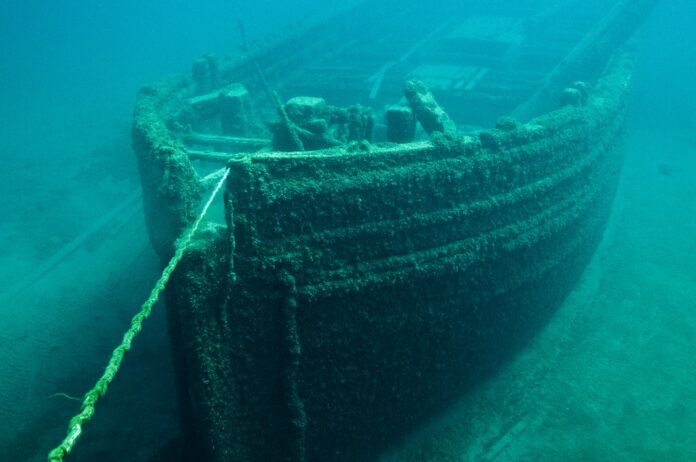Morgan Robertson was a little-known author who wrote several novels in the late 19th and early 20th centuries. He is best known for his book, “The Wreck of the Titan,” which is eerily similar to the sinking of the Titanic, even though it was written 14 years before the actual disaster occurred. However, that wasn’t his only prediction. Here are some of his most well-known prophecies:
- The Wreck of the Titan: In 1898, Robertson published this novel about a fictional ship called the Titan, which was deemed unsinkable, but hit an iceberg and sank in the North Atlantic. The similarities between the Titan and the Titanic are striking. Both ships were around 800 feet long, and both sank after hitting an iceberg in the North Atlantic. Additionally, both ships had a shortage of lifeboats, leading to a high death toll.
- The Oxford Disaster: In 1912, Robertson published “Beyond the Spectrum,” which includes a story called “The Oxford Disaster.” This story is about a ship that hits a mine and sinks, killing all aboard. The Oxford was a real ship that was sunk by a mine during World War I, just two years after the book was published.
- The Future of the Submarine: In 1912, Robertson wrote an article for “The New York Times” about the future of the submarine. He predicted that submarines would play a major role in future wars and that they would become more advanced and dangerous. This was years before submarines became a significant military weapon during World War I.
- The Red Light: In Robertson’s 1909 novel, “The Pirate Island,” there is a scene where a ship is warned of danger by a mysterious red light. This is similar to the story of the RMS Carpathia, which was the first ship to reach the Titanic after it sank. The Carpathia was warned of danger by a mysterious red light that turned out to be a distress signal from the Titanic.
- The War in the Air: In 1902, Robertson published “The Angel of the Revolution,” which is about a group of revolutionaries who use advanced airships to overthrow governments around the world. This was long before the development of airplanes and military aircraft, but the book accurately predicted the use of air power in warfare.
Morgan Robertson may not be a household name, but his predictions were certainly ahead of their time. His ability to see into the future, even if it was through fiction, is truly remarkable. Robertson’s work reminds us that sometimes, truth can be stranger than fiction.
Despite his predictions, Robertson’s work did not receive much recognition during his lifetime, and he died in relative obscurity in 1915. It was only after the sinking of the Titanic in 1912 that people began to take notice of his work, particularly “The Wreck of the Titan.” Some even speculated that Robertson may have had psychic abilities or access to some sort of otherworldly knowledge.
However, it is more likely that Robertson’s predictions were the result of his keen observation and understanding of the world around him. As a sailor and shipbuilder, he was intimately familiar with the dangers of the sea and the limitations of the technology of the time. He also had a deep understanding of human nature, and the ways in which hubris and greed can lead to disaster.
In many ways, Robertson’s work is a cautionary tale, reminding us of the dangers of overconfidence and complacency. His predictions may have been uncanny, but they were also a warning, urging us to be vigilant and prepared for the worst.
Today, Morgan Robertson is remembered as an author and a prophet, whose work continues to captivate and intrigue readers. While his predictions may have been unsettling, they also serve as a reminder of the power of literature to challenge our assumptions and open our minds to new possibilities.
Views: 52






